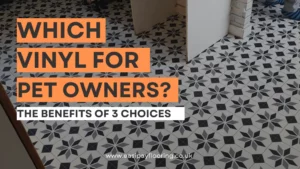Vinyl flooring is known for its durability, ease of maintenance, and aesthetic appeal, making it a popular choice for indoor environments. However, homeowners and designers often wonder if this versatile material can be extended to outdoor spaces. This guide will explore the feasibility, advantages, and considerations of using vinyl flooring outside, helping you make an informed decision for your outdoor areas.
Feasibility of Using Vinyl Flooring Outdoors
Vinyl flooring is primarily designed for indoor use due to its construction and material properties. However, advancements in manufacturing have introduced certain types of vinyl flooring that can withstand outdoor conditions with proper installation and care.
Types of Vinyl Suitable for Outdoors
- Vinyl Tiles and Planks: Some vinyl tiles and planks are specially treated to resist UV rays and moisture, making them potential options for covered outdoor spaces where they are not directly exposed to the elements.
- Luxury Vinyl Tile (LVT): High-quality LVT can be a more durable option that might withstand outdoor conditions better than standard vinyl, especially in semi-outdoor areas like sunrooms.
Considerations for Installing Vinyl Flooring Outdoors
1. Climate and Exposure
The local climate plays a crucial role in deciding if you can install vinyl flooring outside. Vinyl can be susceptible to:
- Temperature Fluctuations: Extreme temperatures can cause vinyl to expand and contract, potentially leading to warping or cracking over time.
- Sunlight Exposure: Prolonged exposure to direct sunlight can fade vinyl flooring and weaken its structure.
2. Moisture and Humidity
Vinyl’s susceptibility to water damage makes it crucial to consider the moisture levels of your environment. While vinyl is generally water-resistant, standing water and high humidity can seep into the seams, leading to mold or mildew.
3. Surface Preparation
Like indoor installations, the subfloor for outdoor vinyl flooring needs to be smooth, level, and dry. Any imperfections can affect the flooring’s durability and appearance.
4. Maintenance
Outdoor vinyl flooring will require more maintenance than indoor flooring due to exposure to dirt, debris, and other outdoor elements. Regular cleaning and occasional sealing may be necessary to maintain its condition.
Advantages of Using Vinyl Flooring Outdoors
- Aesthetic Appeal: Vinyl flooring comes in a range of designs and patterns that can enhance the look of outdoor spaces.
- Comfort: Vinyl is softer underfoot compared to traditional outdoor flooring materials like concrete or bricks.
- Cost-Effective: It is generally less expensive than other outdoor flooring options like wood or ceramic tiles.
Alternatives to Vinyl for Outdoor Flooring
If the drawbacks of outdoor vinyl flooring outweigh the benefits for your specific situation, consider these alternatives:
- Composite Decking: Designed specifically for outdoor use, resistant to weather, and low maintenance.
- Outdoor Tiles: Ceramic or porcelain tiles are durable and can withstand temperature changes and moisture.
- Stone Pavers: Natural stone offers durability and a classic look for outdoor spaces.
